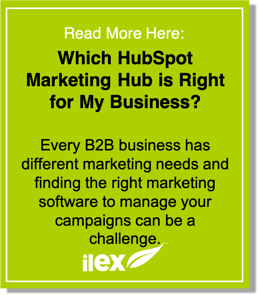Hashtags are a key element to a B2B social media strategy. You need to know how to strategically implement them into your content in order to expand your content reach, amplify your brand, target your market and improve your SEO. Hashtags are a powerful social media tool that enable you to segment your content into searchable topics across different platforms.
At first, hashtags can seem daunting and difficult to leverage, but once you’ve found the right ones to strengthen your digital presence, your content will reach prospects outside your network.
In general, there are 3 types of hashtags:
- Content Hashtags
- Trending Hashtags
- Branded Hashtags
Content Hashtags
Content hashtags are hashtags that directly relate to the industry, product or service you are trying to promote. They aren’t necessarily trending or highly popular, but content hashtags will grant you a more precise audience base and improve your SEO. It will also keep you relevant in the current market trends of your industry, such as B2B tech and telecoms.
An example of a good hashtag we use is #InboundMarketing. It a) relates directly to our industry and b) links to the content / service we are providing.
Trending Hashtags
Trending hashtags are very different to content hashtags, in the sense that trending hashtags will make your brand’s visibility soar. These hashtags have millions of viewers in the most viral situations. However, you don’t want to come across as spammy so a variation of these hashtags along with content and branded hashtags is key.
If you are going to utilise an already existing and trending hashtag, it’s important to do your research first. Make sure the hashtag is a) right for your content and b) populating within your industry. You want to create an authentic narrative to your content through your hashtag choice.
Branded Hashtags
Branded hashtags are specifically linked to you and your brand. Make it your company name, or a tagline that people most commonly know about your business. Use it essentially as a business tag for your company, to develop a community among your audience.
For example, HubSpot use the hashtag #GrowBetter to celebrate their accomplishments, as well as spread their advice and tips on how to grow your audience. This creates an online community to share their experiences with their prospects and followers.
Now we’ve nailed down the three variations of hashtags, we can focus on how to adapt these to different social media sites.
Using Hashtags on Different Social Media Sites
LinkedIn:
- In each article posting, space out hashtag use and, when possible, keep them away from the actual important information you’ve written.
Twitter:
- When you start a new tweet, enter the # symbol and start typing, Twitter will recommend hashtags for you. You can either pick one from their suggestions or create your own.
- Remember to stick to 2-3 hashtags per post.
- You can use hashtags in the middle of a #tweet or at the end of one. #JustLikeThis.
If you want to learn more about how to use hashtags to promote your B2B company, our expert team will be happy to help. You can book a meeting here:




